My home is filled with houseplants, and about 30 percent of those are some variety of dracaena.
This is in part because of my (infamous) tendency to favor fuss-free houseplants, but another factor at work is how dang easy it is to propagate dracaena from cuttings.
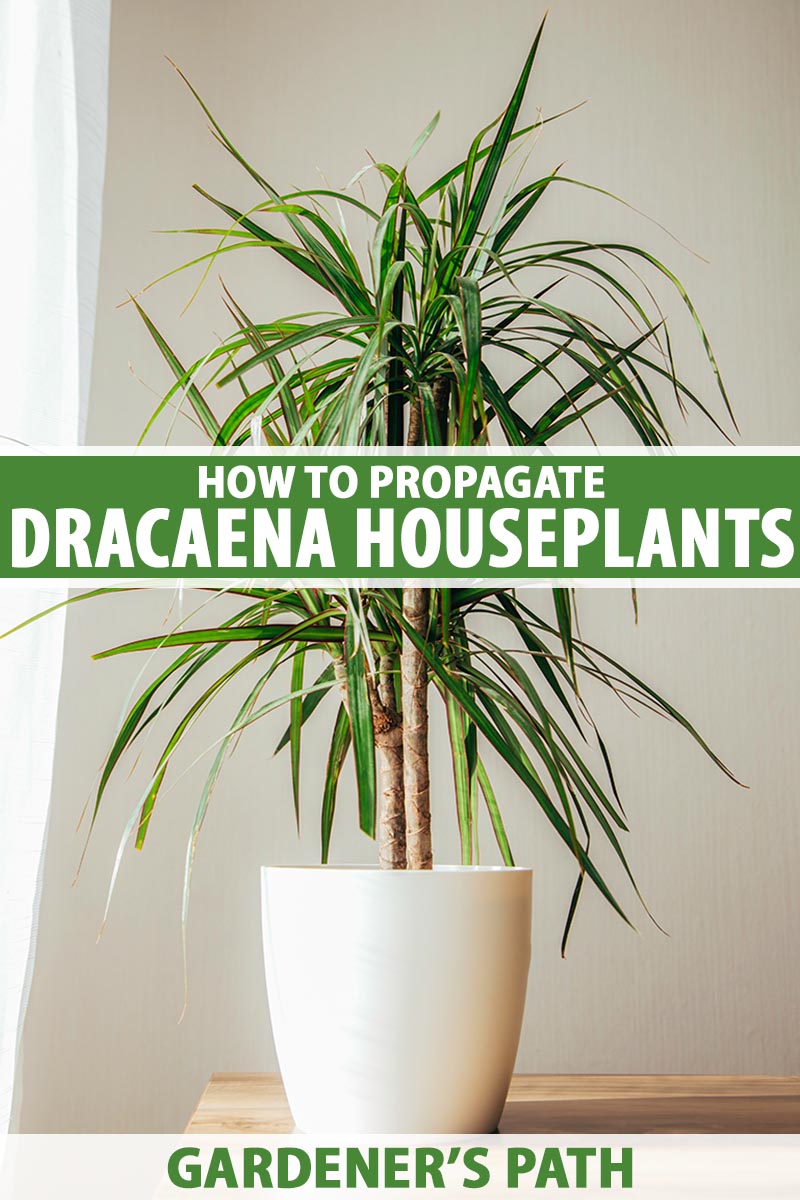
We link to vendors to help you find relevant products. If you buy from one of our links, we may earn a commission.
These easy-to-grow cuttings are perfect for filling up your own home, and they make excellent gifts for people who need a little more green in their households.
Let’s get into how to grow dracaena from cuttings!
What You’ll Learn
The Basics
There are a couple of available methods that work for propagating dracaena, but this guide will focus on the one that has the best track record, and is the easiest in practice.
Follow these simple steps and you’ll be swimming in dracaena before you know it.
You’ll need a few items to do this.
Dracaena Cuttings
We’ll dig into what kind of cuttings you want to take and how to snip them a little later in the article. But it’s important to remember that you can’t propagate dracaena cuttings without any on hand!
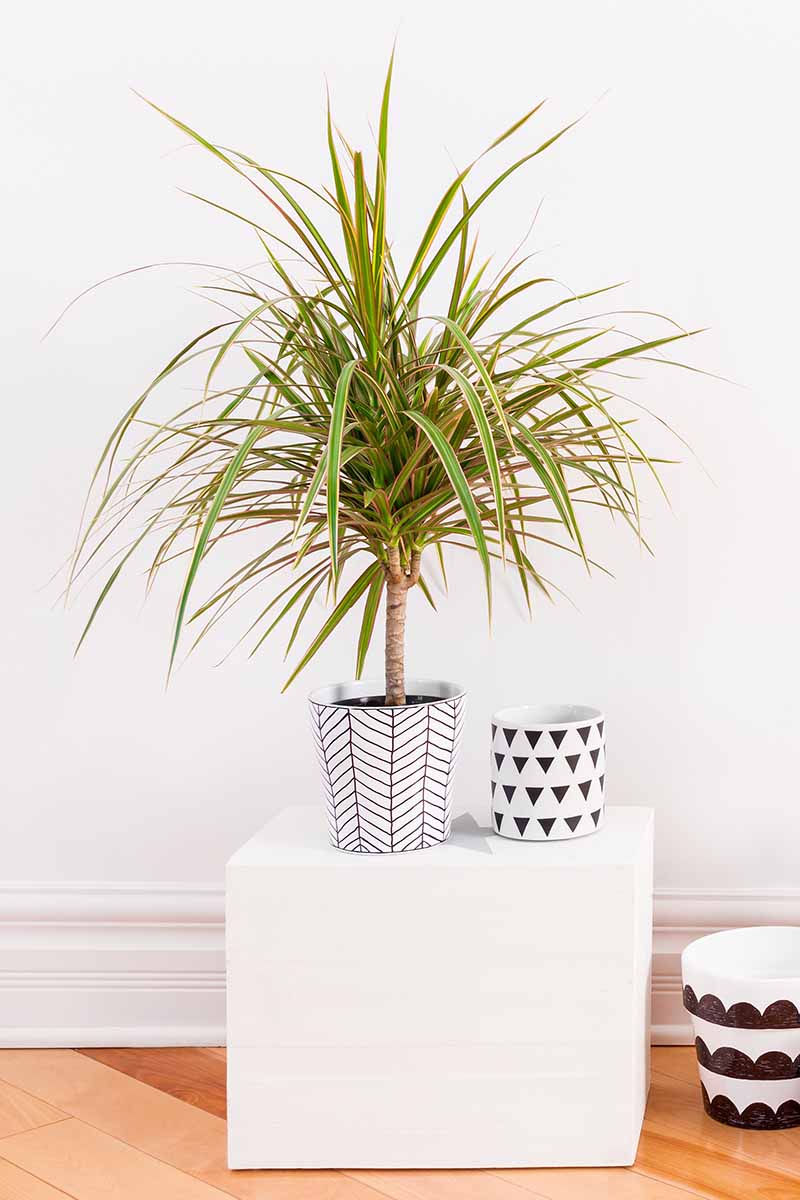
If you have access to a mature, healthy specimen, that’s your ticket. Whether it’s growing in your own home, or the home of a friend, you may be able to take a few snips – with permission of course, if you’re not the owner.
On that note, this isn’t the time to be chopping plants you see at the store, a botanical garden, or elsewhere. Let’s stick with houseplants that are available for sharing.
Rooting Hormone
This part is optional, but I always use a rooting powder when starting cuttings, and that goes for every single plant I start.
My wife has fantastic luck using only water, but she was born with a green thumb, whereas I work for mine every day.
Bonide Bontone II Rooting Powder
By default, I’ve always used Bonide’s Bontone II Rooting Powder at my house. It’s available from Arbico Organics.
A little jar like this will last a long time, so it’s a smart investment if you’re interested in propagating any sort of plant from cuttings.
I’ve read about people using willow branch water, but have never had luck using this as a rooting hormone myself. The science seems to work out on it, but I can’t say for sure if it works.
Growing Medium
Any growing medium made for potted plants will work, though dracaena tends to prefer something slightly acidic. I’ve used Pro Mix as the medium for the plants I’ve grown, and it’s my preferred option.
The key quality you want in whatever medium you select is good drainage. And you can make your own with no problem.
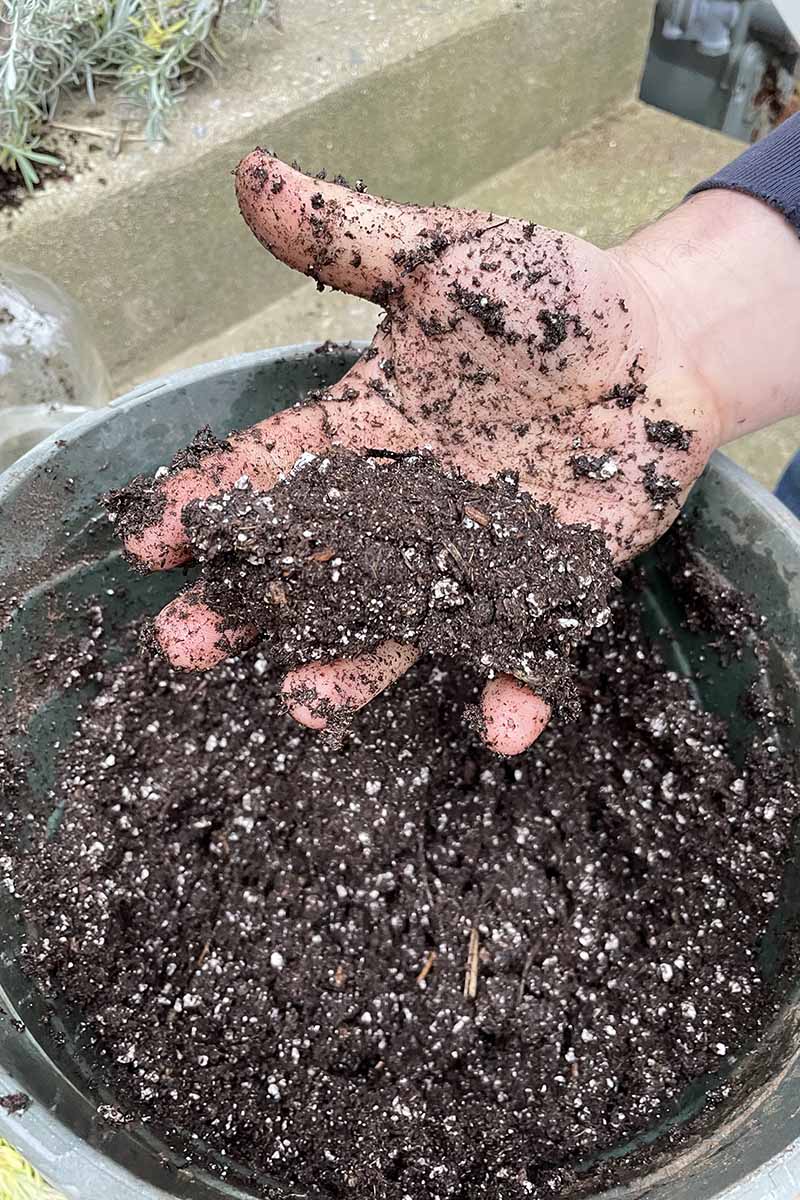
I like a blend that is four parts peat moss or coir fiber, three parts perlite, and one part sand. Add a thin top layer of compost and you’ve got something on par with store-quality potting mix.
I highly recommend wetting your growing medium before you start working on propagation.
Very few moments in gardening are as frustrating as when you proudly give your plants their first watering, only for the growing medium to immediately flood into a soupy mess.
The best test for perfect water levels is to grab a handful of the soil in your palm and squeeze it into a ball. If the clump of soil retains its shape with little water squishing out, you’re doing well!
Containers
I’ve been using the same four-inch plastic containers for about five years now for all of my cuttings.
Every year, we grow our vegetables from seed and transplant them into these larger spaces, then they sit on the shelf until we propagate more dracaena, pothos, spider plants, or whatever else we’re looking for at the time.
My point is, you don’t need anything fancy to get your dracaena cuttings started. The only real requirement is an appropriately-sized container with good drainage. You’re looking for something about four inches in diameter.
This could be re-used containers from yesteryear, or cut-off bottoms from milk cartons, or leftover party cups from that graduation party last spring. As long as it’s got drainage holes and is an appropriate size, it’ll work!
Before you add your soil and plants, always be sure to clean and sanitize reused containers after other uses, or between gardening projects.
Sharp, Clean Tools
For snipping those dracaena cuttings, you want to use a pair of bypass pruners, like my trusty Felco F-2s. A sharp knife will work in a pinch.
Your goal here is to produce a clean cut with minimal bruising and damage to the cutting, or the parent plant).
I’ve grown fond of using a grafting knife as well, for all of my fine pruning and slicing – specifically this one from Linsen Outdoor that’s available from Amazon.

It’s very, very sharp, so don’t attempt using one of these if you aren’t fully confident in your manual dexterity!
Before you get started, and after use, be sure to keep your cutting tools clean and dry! This is good gardening practice to prevent the spread of any pathogens, as well as keeping rust and gunk away from your precious tools.
1-2-3 Dracaena Propagation
Ready to get going? The first step is to get right to cuttin’!
Procuring Your Cuttings
Your goal is to select cuttings that are about six to ten inches long from your parent plant.
You can get away with taking smaller cuttings, but larger ones propagate just as well for this plant, so why not begin with something bigger if it’s available? That way, you’ll have a larger plant faster!
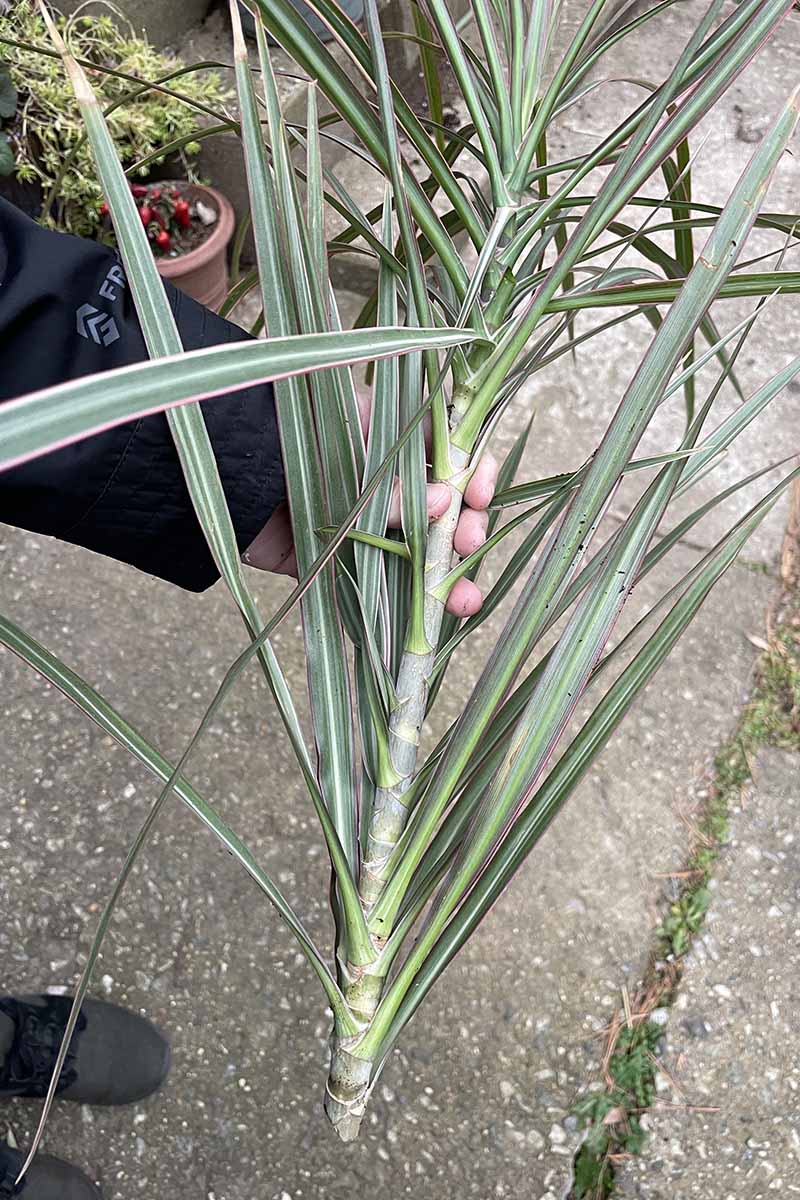
The bigger your parent plant is, the more cuttings you can get away with borrowing.
Many indoor gardeners will cut back and trim their houseplants once or twice a year, and this is the perfect opportunity to give your “trimmings” a second use.
After you snag your cuttings, remove most of the leaves, leaving a nice little spray at the top. Imagine each cutting is a miniature palm tree, and you’re on the right track.
We remove these leaves so the plant can focus on maximizing root development.
When I’m working with any type of cuttings, the moment they’re borrowed from the parent plant, I drop them in water. It’s an old habit, but it’s a very good habit, so I’m stickin’ to it! I do this so the stem is immediately transitioned to a safe space after it’s removed from the parent plant.
You could skip the water. Leave the cuttings out for up to an hour or so, and get your cuttings into their new temporary homes for rooting as soon as you can get to it.
I think there’s a fifty/fifty approval rate on either option here depending on who you ask, so your own predilection is just fine.
Station Your Cuttings
I’ve got two destinations to offer for your cuttings. But first, if you’re using a rooting hormone product, you want to wet the bottom of each cutting and dip it in there. Tap off any excess, back into the bottle.
Some gardeners recommend against this, advocating for taking a small amount out of the bottle for each project and tossing any excess instead, but this is what I do, and I haven’t had any issues.
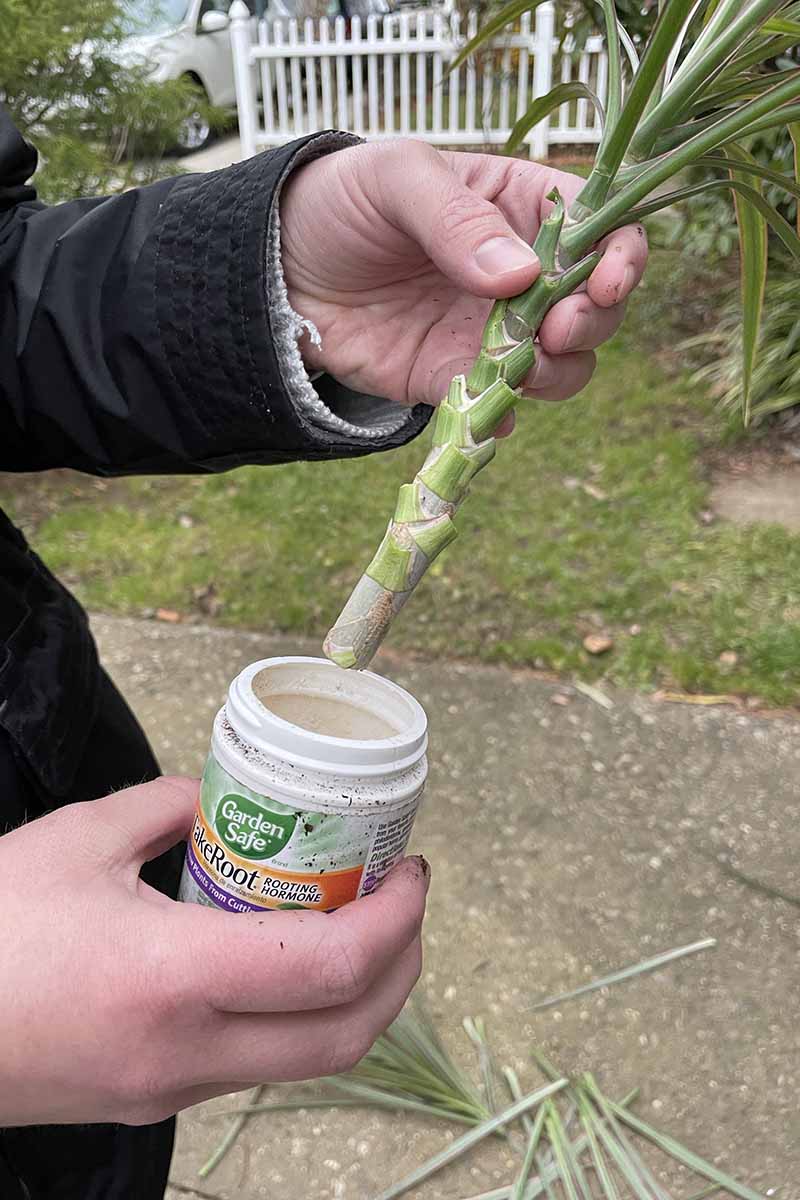
My preferred placement is to stick the cutting right into the soil after it’s dipped. Firm the soil with your fingers so the cutting stands upright, and pow, you’re done!
Okay, it’s not quite that easy. But it’s almost that easy.
You want the cutting to have enough of its stem pressed into the soil so it won’t topple over. Firmly press the soil around the base of the cutting so that it doesn’t collapse or lean. You can work with the orientation of the plant so that it’s growing straight up.
I like to leave a small space of soil between the bottom of the cutting and the bottom of the container it’s going in. A half inch or so will do. This plant doesn’t need much of anything – ever – by way of fertilizer, so a dusting of compost on the surface of the soil is plenty.

Another option is to root your dracaena cuttings in water. You simply plop the cutting into a container – without drainage holes, this time – and wait a few weeks for roots to grow.
I think it’s best to wait until the roots on your cutting are about an inch long before repotting in another container. And there’s no need to add hormone powder if you go this route.
Honestly, you could keep the dracaena in its watery home indefinitely. Change out the water once every week or two and you’re donezo. “Donezo” is a great word, isn’t it? I don’t think I coined it, but I sure use it like I did.
But if you decide your true dracaena propagation path is for your cuttings to grow in soil, wait until you see those roots develop, then pot it in a container exactly as described above.
Tend Your Cuttings
Keep your dracaena cuttings in a brightly lit area, but do your best to keep them out of direct sunlight to avoid allowing them to burn in the sun.
If your growing medium was nice and moist, you won’t need to water the cuttings for about a week, depending on what conditions you have the plants in.
Remember, you’ve basically got a stick in a cup of dirt here. If you keep watering it, the growing medium will grow saturated – and, in a word, gross – and your dracaena will rot into a stinky pile of goop.
Nobody wants that, so wait to water your dracaena cuttings until they really need it.
My tried-and-true test for measuring how much water a plant needs is to pick up the container it’s growing in. Does it have any weight at all? If the answer’s “yes,” then your plant probably doesn’t need water.
However, if the weight feels like your plant is growing in cotton candy instead of soil, it needs a drink of water. I add a little at a time, walk away for ten minutes, and then give it another drink.
This is my super-scientific trick for giving the soil enough time to absorb the first drink, and wetting its whistle for the second.
At this point, you’re going to wait a few weeks to a few months for results, but your dracaena propagation project is essentially finished. Good job!
Wait! What Happens Next?
After those few weeks of waiting, your dracaena cuttings will have their very own roots. I know, it’s like kindergarten graduation; it gets me every time.
But before you repot your dracaena into a larger container, wait! Starting plants from cuttings requires a great depth of patience, and rushing things along at this stage is an excellent way to sacrifice weeks of waiting.
My default method for deciding when it’s time to replant any cutting into a larger container is to wait until you see roots poking out of the bottom of the pot. Once you can see evidence of that, wait a few weeks longer.
I’ve always waited until my cuttings or seedlings are ever-so-slightly rootbound in the container before I consider repotting them to a larger home.
Once your dracaena cuttings have this kind of root development, you’re good to repot them and start treating them like your average dracaena plant.
Of course, that means forgetting to water them for weeks and tucking them away in a corner in your bedroom where you never look… Right? That’s where dracaena plants are at their happiest, so keep that going!
Be Seein’ Ya, Dracaena
You’ve got the knowledge to grow yourself a whole host of propagated dracaena plants now. Before long, you’re going to have way too many plants for your own good, so why not hand them out to friends and family?
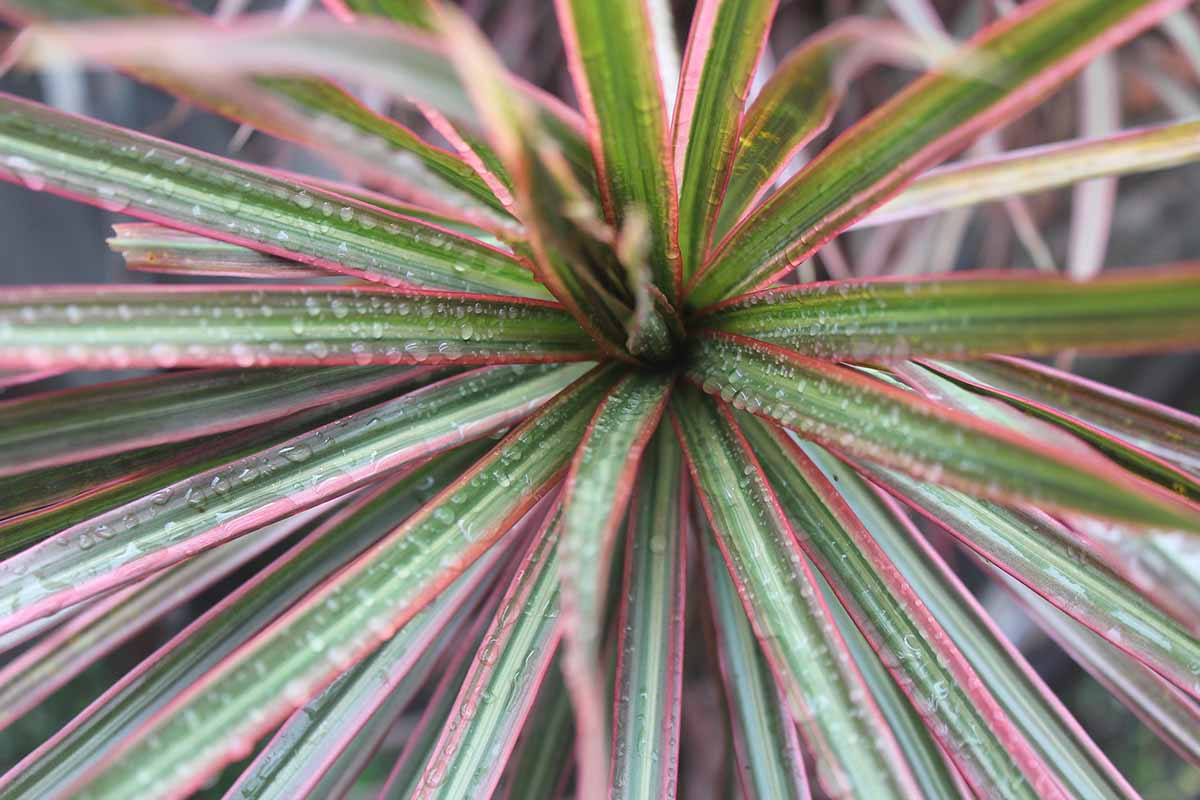
Dracaenas are perfect gifts for both professional gardeners and people who are new to the practice. Share the wealth, even if there isn’t much to share.
Propagation is very easy, so it’s not unbelievable to imagine you’ll have dozens of extra plants hanging around that need a good home.
I hope this article was a helpful read for you! Let us know if you have any questions in the comments below, and feel free to share photos of your success with this propagation method. As always, thank you for reading Gardener’s Path!
Next up, check out some of our other articles on growing dracaena plants, starting with these:
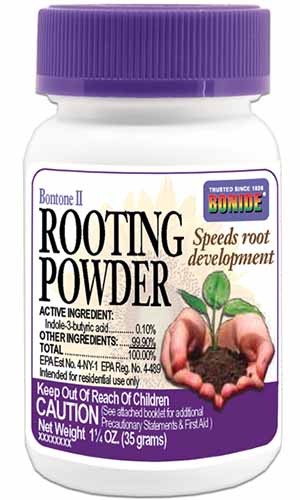

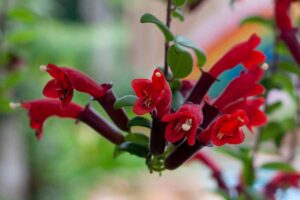

Hi Matt. Silly question, but I’ve just accidently knocked some branches off my dracaena. Could the stalks root/grow if I plant them straight back into the pot they were in?
Hey there! It’s worth a shot. Dracaena are pretty eager to get growing, so there’s a good chance they’ll take off as long as the branches aren’t too large. If these branches have small branches of their own I’d snip them off so these new “cuttings” are able to survive long enough to grow roots. The trick is to leave them with enough greenery to survive the process, but not so much they can’t sustain themselves.
Give it a shot, and let me know how it works!
Hey Matt!! I know this is an older article, so I hope you see this comment and are able to help me out! So we have some amazing dracaenas at our house which are nearly 20’ high and have awesome shapes & offshoots. I know you said in the article that larger cuttings propagate just as well as smaller cuttings, but have you ever propagated 7+ foot dracaenas before? I ask, because that is what I am looking to do and wasn’t sure if I needed to do anything differently. At first I was going to attempt to grow the… Read more »
Apologies for our very delayed response, Brett. Did you give this a try, and how did it go?
Many transplanted saplings tend to be top heavy, and stakes can be used to support them- trying something similar should work here. But we’d never recommend tightly cinching or tying any type of plant to hold it up. Anything used to tie supports should have some give so it doesn’t damage the plant.
Also, I forgot to ask about crowding too many propagated stems in one area. I know they’re a pretty resilient plant, but would it hurt if I put the cut stems right next to each other all bundled up where the new roots will all grow on top of each other? Thanks!
We wouldn’t recommend it. The roots will be in direct competition, and besides becoming entangled, it will be difficult for them to obtain the proper water and nutrition. Lack of airflow between the aboveground portions could become a concern as well.
Hi Matt, I’ve inherited a dracaena that has sort of “fallen over.” It was originally part of a dish style planter, I think, but is the only plant remaining in the 12” or so bowl. There are two long stems, approximately 16 or 18 inches long, which are essentially lying on their sides in the bowl, with foliage pointing to the side, looking sort of like gramophones. The stems are interwoven at the base, with some of the roots extending into the air (where the stems sort of collapsed and bent over), then the stems separate & are topped w/the… Read more »
Are you able to share photos of what you’re describing, Robin? As long as you can separate those interwoven stems at some point, you should be able to top the crowns and root them at their bases. If the new growth has its own root system, even better- simply divide and replant. If not, the rooting process would be the same as what’s described in our article. Start with fresh potting soil in new containers, and see our general guide to growing dracaena for more tips.
Thanks. Here are 2 photos of the plant. As you might be able to see, there are now 2-3 additional new growths along one of the stems since my initial comment, so I’m also wondering whether & if so how to separate them to allow them to grow independently.
I saw that the other said some thing about only having a few leaves on the stem when propagating. Does this mean I should remove most of the healthy foliage from the tops of the two stems?
Appreciate any and all advice you could offer!
Thanks again,
Robin
Hi Robin, I was able to retrieve your photos. I would not discard any of the foliage. What I would do is create several new plants to correct the sideways growth – you’ll essentially be discarding the existing roots and starting over. Top the two main stems so you have enough stem to root and stand stable in containers with the tufts of healthy foliage on top. Then separate the remaining stem with foliage growing directly out of the pot so you have a piece with foliage and an attached portion of stem for rooting. Better yet, if the portion… Read more »
Hi Allison, Thank you for your quick response. Before I actually start cutting, I’d like to confirm that I understand your advice and ask a few additional questions; I hope that’s OK? For the two original types of foliage, how long should the new stems be, and how deep should the cut ends be buried? Do you recommend using root tone on the bottom of the stem before placing it in the new medium? The the two tufts (1 large, the other tiny) of new growth that are close to one another appear to be growing from different stems. When… Read more »
Hi Robin, that’s fine! As noted above in the instructions in our article, the length of the stems depends on the size and weight of the foliage when you are topping plants to take cuttings. These large tufts tend to be top-heavy. Each cutting should have enough stem available to press into the soil so it will take root without falling over. Stakes can be used for additional support. I’d start with a bit more than you think you might need since you can’t add more stem back on once you’ve cut it if it’s too short! Powdered rooting hormone… Read more »
That was so helpful and entertaining, made me smile. Thank you.
Thank you for your kind words Julieann!
Hey! I know this is an older article but we have one of these at my office that was starting to die (office light and no water for a month ;( ) I’m working to resurrect it but two of its leafy offshoot tops came off while I was watering and removing dead foliage. I’m going to try and root them at home but their bases are very shriveled where they were attached to the mother plant. Any tips? I was going to add liquid plant food to water and try and do it that way since there is essentially… Read more »
I admire your desire to save this plant, Mel! Unfortunately it’s going to be difficult to propagate individual leaves without some portion of the stem attached for these plants, and anything that’s already shriveled isn’t likely to put out new growth. Fertilizer can also burn cuttings or impede growth, and it isn’t usually necessary for rooting cuttings. But something like a powdered rooting hormone can sometimes help cutting to root in soil. I’d put the bases of the pieces you saved in a cup of clear water, and check for any signs of life in a few weeks. Otherwise, do… Read more »
I misread an article somewhere and thought my draceana cutting had to callus off. Is there any chance it will still grow roots in soil?
It might! Wait and see, and dispose of the cutting and start over if you note any signs of rot or dying off.